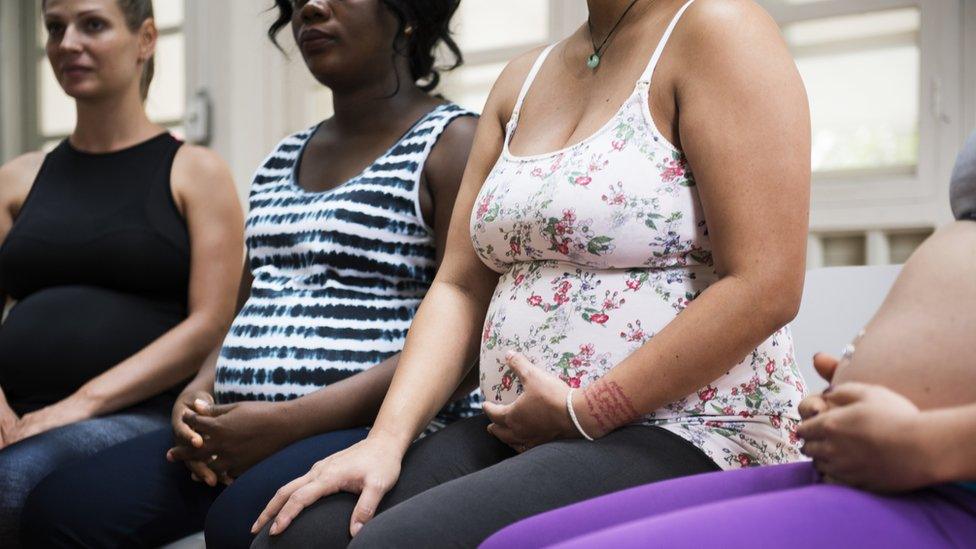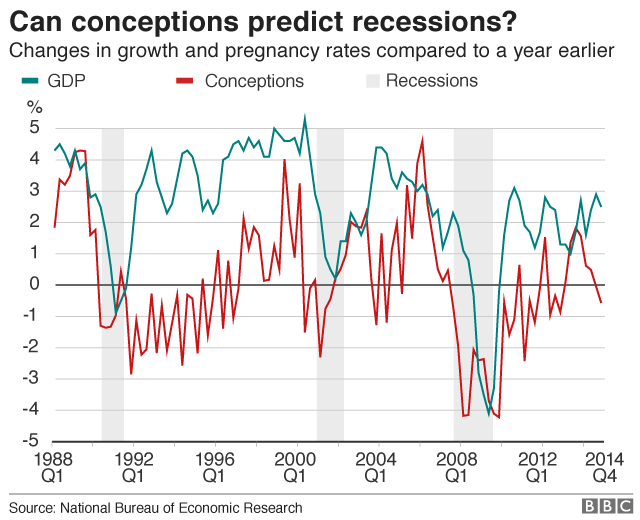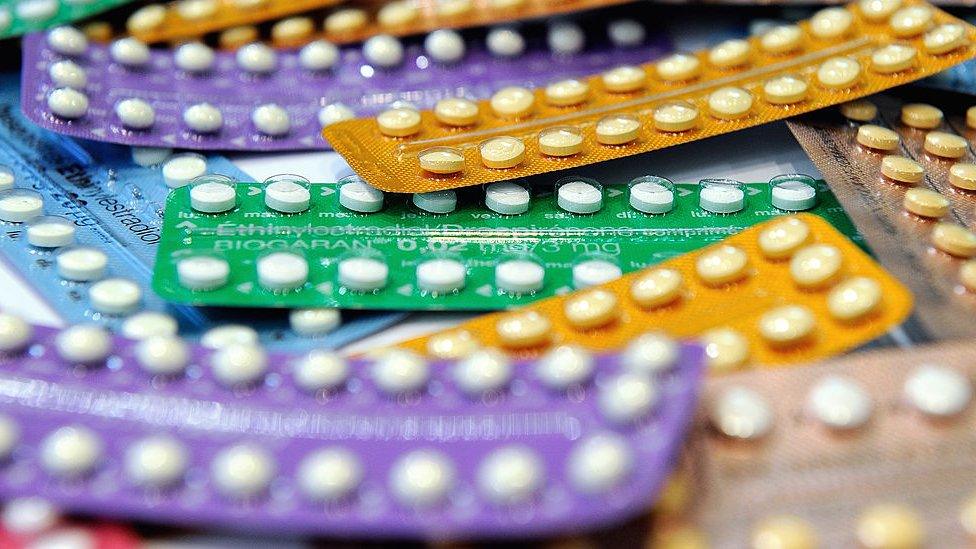Can you predict a recession by looking at pregnancy rates?
- Published

The rate of women becoming pregnant begins to fall several months before the start of a recession, research from US academics suggests.
Its authors said fertility rates might help predict economic downturns.
They were more accurate than some traditional indicators, they said.
The research shows the rate of conceptions stopped increasing and began to fall several quarters before the start of the last three recessions in the United States.
Economists are frequently criticised for failing to accurately predict the direction of economic growth. Increasingly they are looking beyond traditional measures such as manufacturing output, retail spending and house prices to help build a more complex and accurate picture.
"We think that the factors behind the last three recessions also had a profound and rapid effect on fertility decisions," the report's authors said, summarising their findings.
"In fact, these factors seem to have impacted fertility decisions before large parts of the economy."
Surprise results
The authors of Is Fertility a Leading Economic Indicator?, external tracked more than 100 million births in the United States between 1989 and 2016. They incorporated data on miscarriages and abortions.
It was already accepted that birth rates fall in a downturn, but Daniel Hungerman, Kasey Buckles and Steven Lugauer found that conception rates drop several months before other signs of a recession become visible.

"We were surprised when we saw [the correlation] and then we were surprised no one had noticed it before," said Mr Hungerman.
The paper found rates of conceptions grew more slowly, followed by rapid falls in the rate of conception starting several quarters before recessions begin.
"The nature of each recession has differed and so what conversation goes on at the kitchen table might be different, but I do think that people talk about the future when they try to have a baby and in aggregate they seem to do a good job thinking about it," says Mr Hungerman.
The paper says for example that in December 2007 a poll of business leaders found they were optimistic about the future, although it later transpired that by then the recession had begun.
At that point the growth in conception rates had already been falling for several months, with the decline starting several quarters before the collapse of Bear Stearns and Lehman Brothers.

You may also be interested in:

There is also a correlation with the scale of the downturn.
Fertility sank more rapidly (by four percentage points) before the deeper 2007 recession than in the run up to the two previous dips in the early 90s and the early 2000s.
Increasingly the collection of vast amounts of detailed data on everything from online searches to shopping and eating patterns is allowing economists to explore new sources of information on the economy.
"The huge amount of data is important," said Mr Hungerman.
"Even more important is the frequency. Most studies use annual level data but with ours we look within the year.
"For a lot of the anticipatory patterns we see they're measured in quarters or months. If you use annual level data you might miss that."

While it may not be simple to track conceptions in real time, the report's authors suggested proxy data such as the sale of fertility and pregnancy-related goods could be monitored.
In a much discussed case several years ago, US retailer Target reportedly issued money-off coupons on baby items to a teenager after mining its sales data and identifying she was pregnant.
The academics also looked at what happened to conceptions at the end of the last three recessions. But they found the data was less clear cut.
The end of the 2007-08 recession was dubbed a "jobless recovery". Hungerman, Buckley and Lugauer found it was also a "baby-less recovery."
- Published22 May 2017

- Published30 January 2018
- Published28 November 2017
